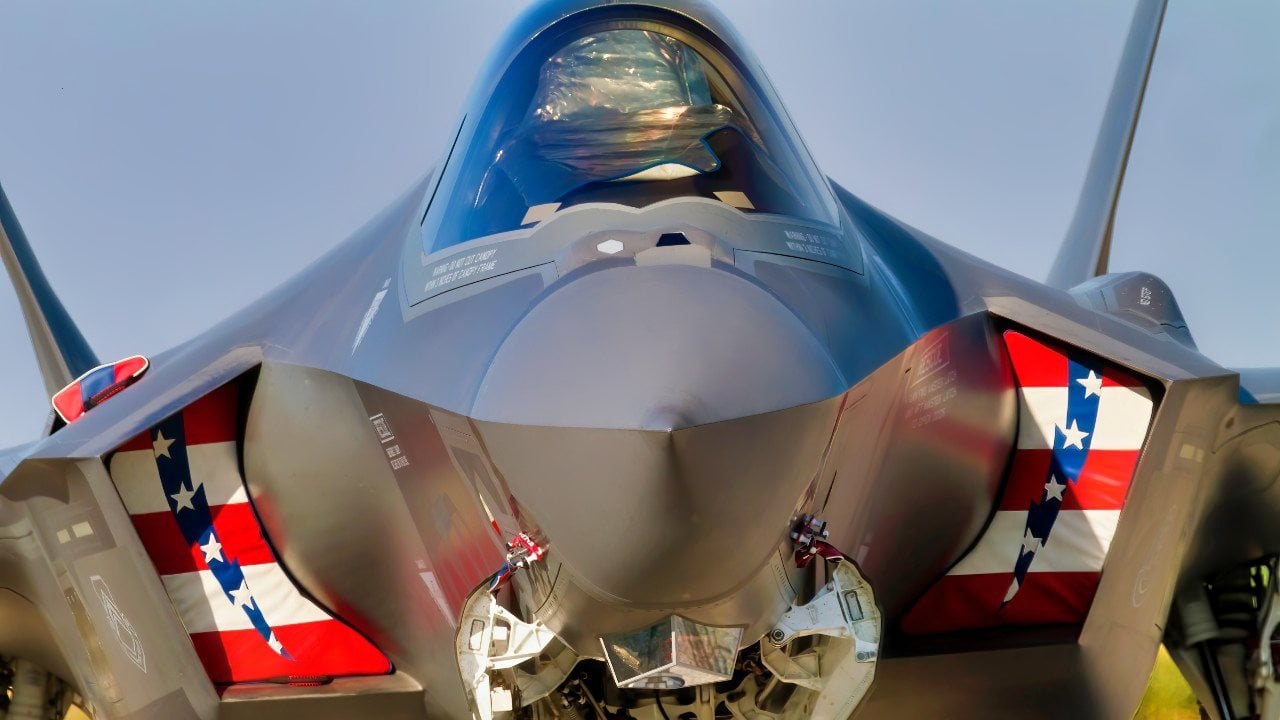The U.S. Navy Sent F-35C Fighters to China's 'Backyard'

Summary and Key Points: The U.S. Navy has relocated Strike Fighter Squadron (VFA) 147 and Fleet Logistics Multi-Mission Squadron (VRM) 30 to Iwakuni, Japan, bolstering its presence in the Indo-Pacific.

-VFA 147 operates the F-35C Lightning II stealth fighter, designed for carrier operations, while VRM 30 flies the CMV-22B Osprey tiltrotor helicopter.
-This move underscores the U.S. commitment to defending Japan and maintaining regional stability. Japan, a key U.S. ally, hosts these advanced aircraft, enhancing joint training and signaling strength against regional adversaries like China, Russia, and North Korea.;
F-35C: Stealth Fighters and Tactical Helicopters to Japan
The U.S. Navy is sending its best fighter jet and one of its most controversial helicopters to one of its most important allies in the Indo-Pacific, right next to China.
The Navy relocated Strike Fighter Squadron (VFA) 147 and Fleet Logistics Multi-Mission Squadron (VRM) 30, Detachment Forward Deployed Naval Forces (FDNF) to Iwakuni, Japan.
VFA 147 operates the F-35C Lightning II stealth fighter jet, while VRM 30, Det FDNF flies the CMV-22B Osprey tiltrotor helicopter.
“The forward presence of VFA 147 and VRM 30 supports the United States’ commitment to the defense of Japan and the security and stability of the vital Indo-Pacific region. They will directly support the Defense Strategic Guidance to posture the most capable units forward in the Indo-Pacific region,” the U.S. Navy said in a press release.
The F-35C Lightning II is the carrier version of the stealth fighter jet. Lockheed Martin, the Navy, and the Marine Corps specifically designed the aircraft to withstand the immense pressures of operating from an aircraft carrier. It shares very similar performance with the other two types of the F-35 Lightning II (the F-35A, which is the conventional take-off version, and the F-35B, which is the Short Take-off, Vertical Landing iteration). Although eighteen countries fly the F-35A and F-35B, only the U.S. Navy and Marine Corps fly the F-35C. As of now, the Navy has ordered 273 F-35Cs and the Marine Corps sixty-seven.
“The United States values Japan’s contributions to the peace, security and stability of the Indo-Pacific and its long-term commitment and hospitality in hosting U.S. forces forward deployed there. These forces, along with their counterparts in the Japan Self-Defense Forces, make up the core capabilities needed by the alliance to meet our common strategic objectives,” the Navy added.
The CMV-22B Osprey is used by the Navy and the Marine Corps to support assault operations because it has the ability to carry dozens of heavily armed troops. However, the Osprey has been plagued by technical problems, with several fatal clashes killing approximately fifty servicemembers over the past twenty years.
“The security environment in the Indo-Pacific requires that the U.S. Navy station the most capable ships and aircraft forward. This posture enables rapid response times for maritime and joint forces, and brings our most capable ships with the greatest amount of striking power and operational capability to bear,” the Navy concluded.

Japan is one of America’s most important allies in the Indo-Pacific. Next to China, Russia, and North Korea, Japan forms a bastion of power against three different potential adversaries.
In terms of military capabilities, Japan is probably the strongest U.S. ally in the Indo-Pacific with scores of surface warships and submarines and hundreds of combat aircraft, including 147 F-35 Lightning II stealth aircraft (105 F-35As and forty-two F-35Bs).
The relocation of the two Navy squadrons in Japan is an excellent opportunity for training but also sends a message to potential adversaries in the region.
About the Author
Stavros Atlamazoglou is a seasoned defense journalist specializing in special operations and a Hellenic Army veteran (national service with the 575th Marine Battalion and Army HQ). He holds a BA from Johns Hopkins University and an MA from Johns Hopkins’ School of Advanced International Studies (SAIS). His work has been featured in Business Insider, Sandboxx, and SOFREP.
Image Credit: Creative Commons.
